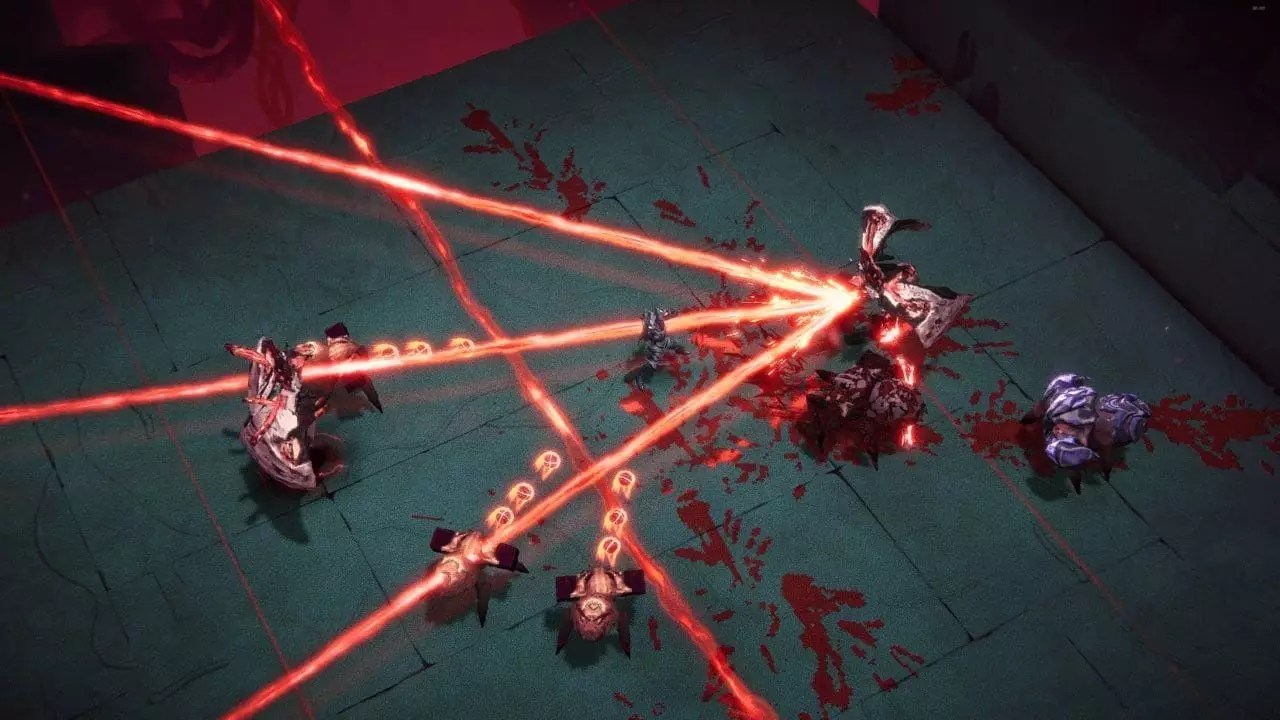“Kill Knight,” developed by PlaySide Studios from Australia, presents a unique take on the bullet-hell genre and infuses it with a curious mixture of punishment and meditative gameplay. Set in a hellish realm, players assume the role of a warrior eternally tormented, battling waves of monstrous foes. What stands out in “Kill Knight” is its distinct combat mechanics, which encourage a state of focused calmness amidst chaos.
I first experienced “Kill Knight” at SXSW Sydney 2024, a bustling venue filled with eager gamers and curious onlookers. As I stepped into the digital inferno, the weight of being watched evaporated upon engaging with the gameplay. The atmosphere crackled with anticipation as demonic hordes surged, and what could have been an intimidating scenario instead transformed into a deeply immersive experience. Killing the creatures that loomed large on my screen was not just about survival; it was about mastering my environment and performance.
At the core of “Kill Knight” is its elaborate combat system, which requires players to manage a diverse arsenal of weapons effectively. This includes distinct firearms better suited for various scenarios: close-range weapons for when enemies close in, and rapid-fire weapons for clearing large crowds. Reloading at the perfect moment isn’t just a mechanic; it’s an art. The game rewards you for your timing and precision, encouraging players to embrace the rhythm of gameplay.
The addition of a melee sword introduces another layer of strategy, allowing for close encounters and providing a means of dispatching foes nearby. The arid terrain you fight across is a space of layered possibilities, where switching weapons, reloading, and positioning must occur almost instinctually. The requirement to dance across the battlefield while maintaining a careful balance of offense and defense creates a dynamic flow that can lead to moments of heightened awareness.
Unlike most titles within the bullet-hell genre, which often plunge players into a panicked frenzy, “Kill Knight” effectively constructs its challenge around the idea of flow. As I engaged with the combat, my approach transformed into a rhythmic loop: circling enemies, unleashing fire, reloading, and repeating. This cycle not only became intuitive but also deeply satisfying, enabling me to overcome the odds despite the formidable hordes surrounding me.
Much of this can be attributed to the game’s design, which allows for brief respites amid the chaos—enough time for players to analyze enemy patterns, strategize their next move, and confidently execute a plan. While panic can spike momentarily, “Kill Knight” encourages creative thinking and adaptability, inviting players to become more than just shooters but tactical thinkers.
A striking aspect of “Kill Knight” is its approach to failure. Unlike traditional gaming narratives that paint defeat as a negative experience, here, dying becomes a component of learning. The pressure of missed shots and failed dodges is counterbalanced by rapid respawning and the prospect of newfound strategies. The audience reactions I encountered at SXSW only intensified the experience, where shared moments of failure transformed into opportunities for growth.
The game thrives on rewarding players who dare to learn from their mistakes, making each death feel less like punishment and more like a stepping stone towards mastery. With every reset, I stepped back into the fray invigorated, coupling my earlier experiences with enhanced tactical decision-making.
As October ushers in a plethora of game releases, “Kill Knight” manages to carve out its niche among them. It offers a refreshing blend of engaging mechanics, thoughtful pacing, and a unique gameplay experience that evokes both excitement and calm. For gamers looking for something that breaks away from conventional bullet-hell narratives without sacrificing depth, “Kill Knight” is a gem that should not be overlooked. With its easy accessibility on platforms like Steam, diving into this entrancing world where skill and grace merge seamlessly is a journey worth embarking on.


Leave a Reply